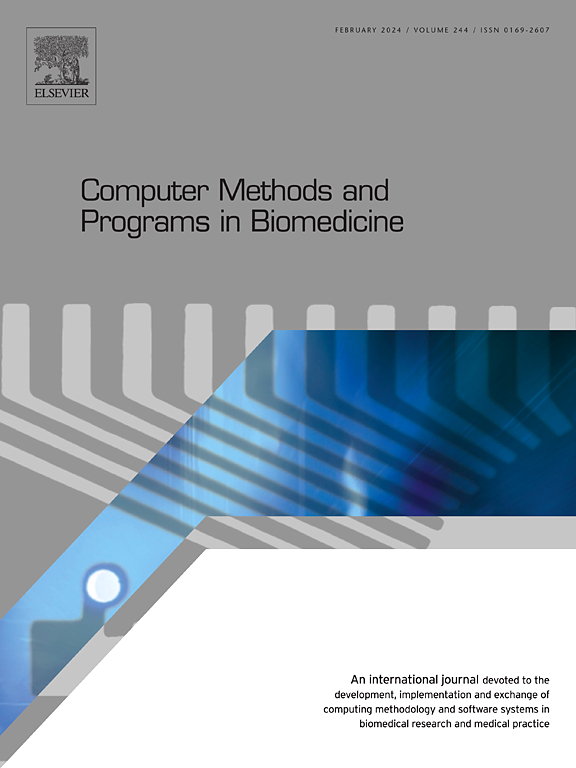Exploring emotional climate recognition in peer conversations through bispectral features and affect dynamics
IF 4.9
2区 医学
Q1 COMPUTER SCIENCE, INTERDISCIPLINARY APPLICATIONS
引用次数: 0
Abstract
Background and Objective:
Emotion recognition in conversations using artificial intelligence (AI) has gained significant attention due to its potential to provide insights into human social behavior. This study extends AI-based emotion recognition to the recognition of emotional climate (EC), which reflects the joint emotional atmosphere dynamically created and perceived by peers during conversations. The objective is to propose and evaluate a novel approach, MLBispec, for EC recognition using speech signals.
Methods:
The MLBispec approach involves time-windowed bispectral analysis of conversational speech signals to extract features related to nonlinear harmonic interactions. These features are combined with peers’ affect dynamics, derived from emotion labeling for the same time windows, to form an extended feature set. The combined feature set is then fed into machine learning (ML) classifiers. MLBispec was evaluated on the IEMOCAP, K-EmoCon, and SEWA open-access datasets, which provide 2D emotion annotations (arousal and valence) divided into low/high classes. Additionally, cross-lingual experiments were conducted to test the framework’s generalization across languages.
Results:
Experimental results demonstrated that MLBispec outperformed previous deep learning-based state-of-the-art approaches in speech emotion recognition, achieving accuracies of 82.6% for arousal and 75.4% for valence. The framework’s incorporation of both qualitative and quantitative EC measurements enhanced its ability to characterize the dynamic speech representations of conversational affective structures. Cross-lingual experiments further validated the robustness of MLBispec.
Conclusions:
The findings highlight the effectiveness of MLBispec in objectively recognizing peers’ EC during conversations, setting a new standard for practical emotionally-aware applications. These include point-of-care healthcare, human–computer interfaces (HCI), and large-language models (LLMs). By enabling dynamic and reliable EC recognition, MLBispec paves the way for advancements in emotionally intelligent systems.
求助全文
约1分钟内获得全文
求助全文
来源期刊

Computer methods and programs in biomedicine
工程技术-工程:生物医学
CiteScore
12.30
自引率
6.60%
发文量
601
审稿时长
135 days
期刊介绍:
To encourage the development of formal computing methods, and their application in biomedical research and medical practice, by illustration of fundamental principles in biomedical informatics research; to stimulate basic research into application software design; to report the state of research of biomedical information processing projects; to report new computer methodologies applied in biomedical areas; the eventual distribution of demonstrable software to avoid duplication of effort; to provide a forum for discussion and improvement of existing software; to optimize contact between national organizations and regional user groups by promoting an international exchange of information on formal methods, standards and software in biomedicine.
Computer Methods and Programs in Biomedicine covers computing methodology and software systems derived from computing science for implementation in all aspects of biomedical research and medical practice. It is designed to serve: biochemists; biologists; geneticists; immunologists; neuroscientists; pharmacologists; toxicologists; clinicians; epidemiologists; psychiatrists; psychologists; cardiologists; chemists; (radio)physicists; computer scientists; programmers and systems analysts; biomedical, clinical, electrical and other engineers; teachers of medical informatics and users of educational software.
 求助内容:
求助内容: 应助结果提醒方式:
应助结果提醒方式:


